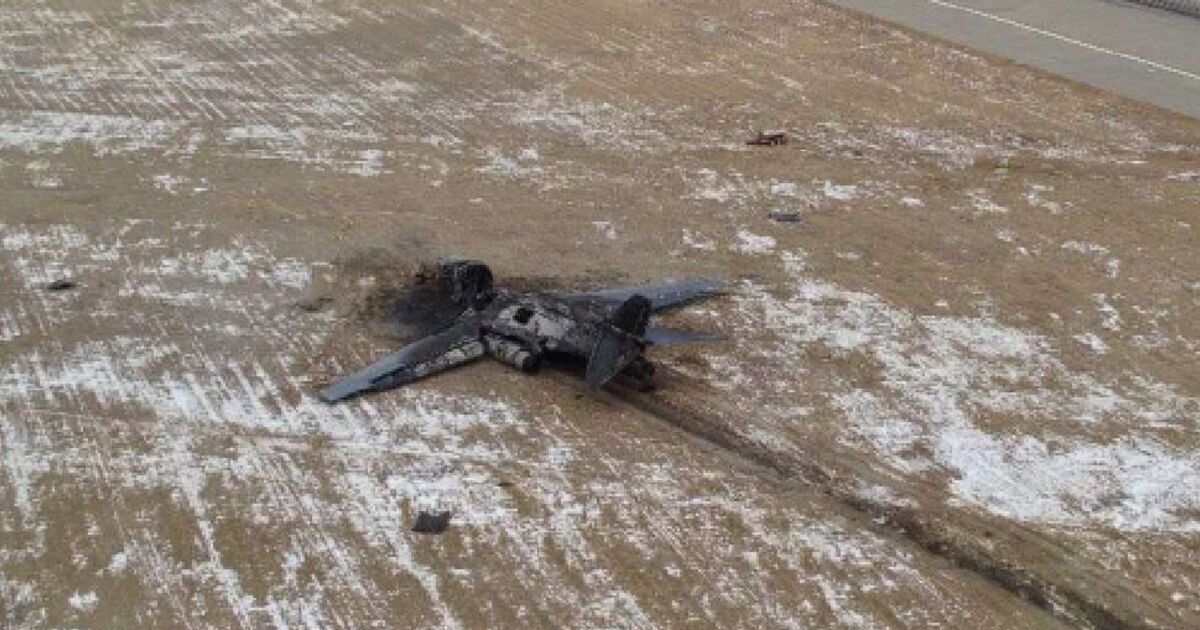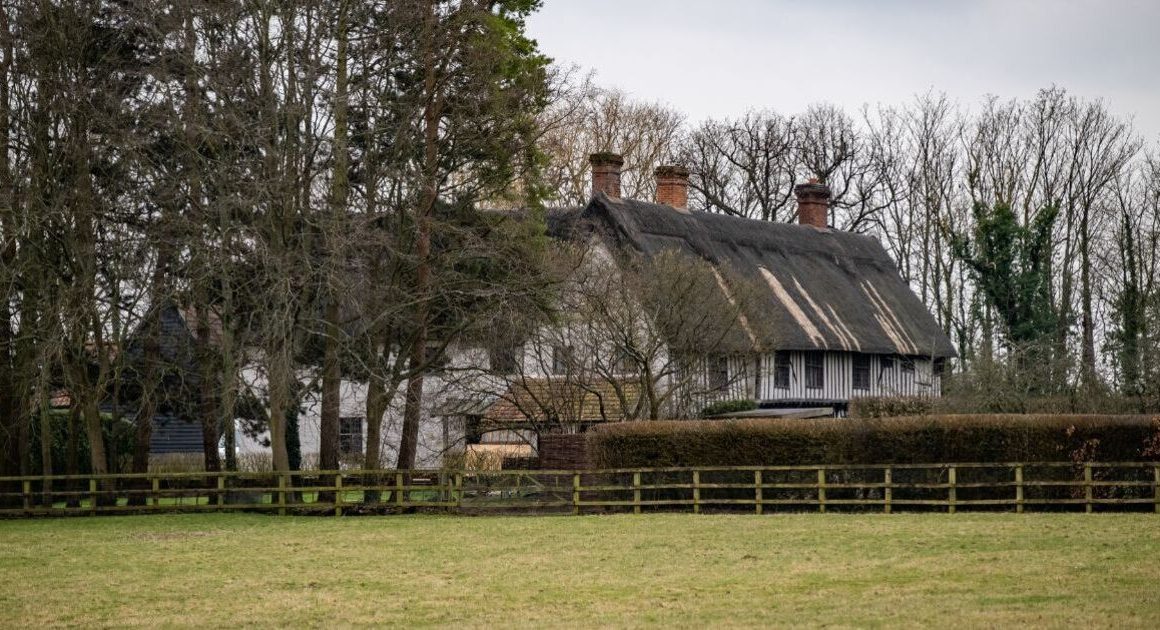The US Air Force crew of a supersonic heavy bomber that was destroyed in a fiery crash while attempting to land in January have been blasted for lacking ‘basic airmanship skills’. The B-1B Lancer, worth an estimated £358m, hit the ground while making an approach in thick fog and heavy wind.
All four crewmembers managed to eject from the Cold War-era bomber jet before it smashed into the ground next to the runway at Ellsworth Air Force Base in South Dakota, January 4, with two sustaining injuries that required medical treatment.
The incident took place during difficult weather conditions, which had forced two B-1Bs on a training flight to return to Ellsworth, where visibility was so poor that ground crew could not see the lights of the planes. The first bomber to land managed to correct its speed and course, despite originally coming in too low.
However, the second B-1B crew did not effectively monitor their instruments and failed to communicate in time to correct their course, with some already focusing on their post-landing checklists. Then, 55 seconds before impact, the plane experienced a sudden wind shear that caused it to accelerate.
Neither the pilot nor the trainee pilot spotted the issue on their instrument dials, as they were looking outside the aircraft and were too late to respond. The actions they did take caused the aircraft to lose power in the turbulent conditions.
Air Force Global Strike Command investigators found in their scathing report that the aircrew failed to manage the bomber’s airspeed and angle of approach while landing, with the crash demonstrating “an organizational culture that tolerated decaying airmanship skills.”
The investigation even found fault in how some ejected from the £358 million bomber. Some had shown a “willful disregard” for their equipment, which the report believes could have contributed to some of the injuries experienced while ejecting.
It concluded by saying: “The mishap occurred due to numerous factors, including a culture of noncompliance, widespread deviation from established policy and procedure, and several organizational influences and preconditions.”
The report’s findings will be used to inform any disciplinary decisions for the crew involved. But with the unusually blunt investigator also finding the whole 34th Bomb Squadron to have “unsatisfactory levels of basic airmanship”, air force leadership has said it will take “appropriate corrective actions”, according to Defense News reporting.
The B-1B Lancer has been flying since the mid-1980s and is a long-range heavy bomber capable of supersonic speeds and changing the shape of its wings mid-flight. Among aviation enthusiasts, it is often nicknamed the ‘Bone’ after its B-1B designation.
During the invasion of Afghanistan and the war in Iraq, B-1B bombers were used to drop thousands of tonnes of explosives. Currently, it is one of three bombers used by the US, alongside their increasingly old B-52 and B-2 planes.
But with an ever-dwindling number of the original B-1Bs still in operation, the world’s largest air force is hoping to replace this aging fleet with the Northrop Grumman B-21 Raider. This upgrade, 50 years after its predecessor rolled out of an aircraft hangar, is expected to be faster, stealthier, and capable of delivering nuclear weapons.











